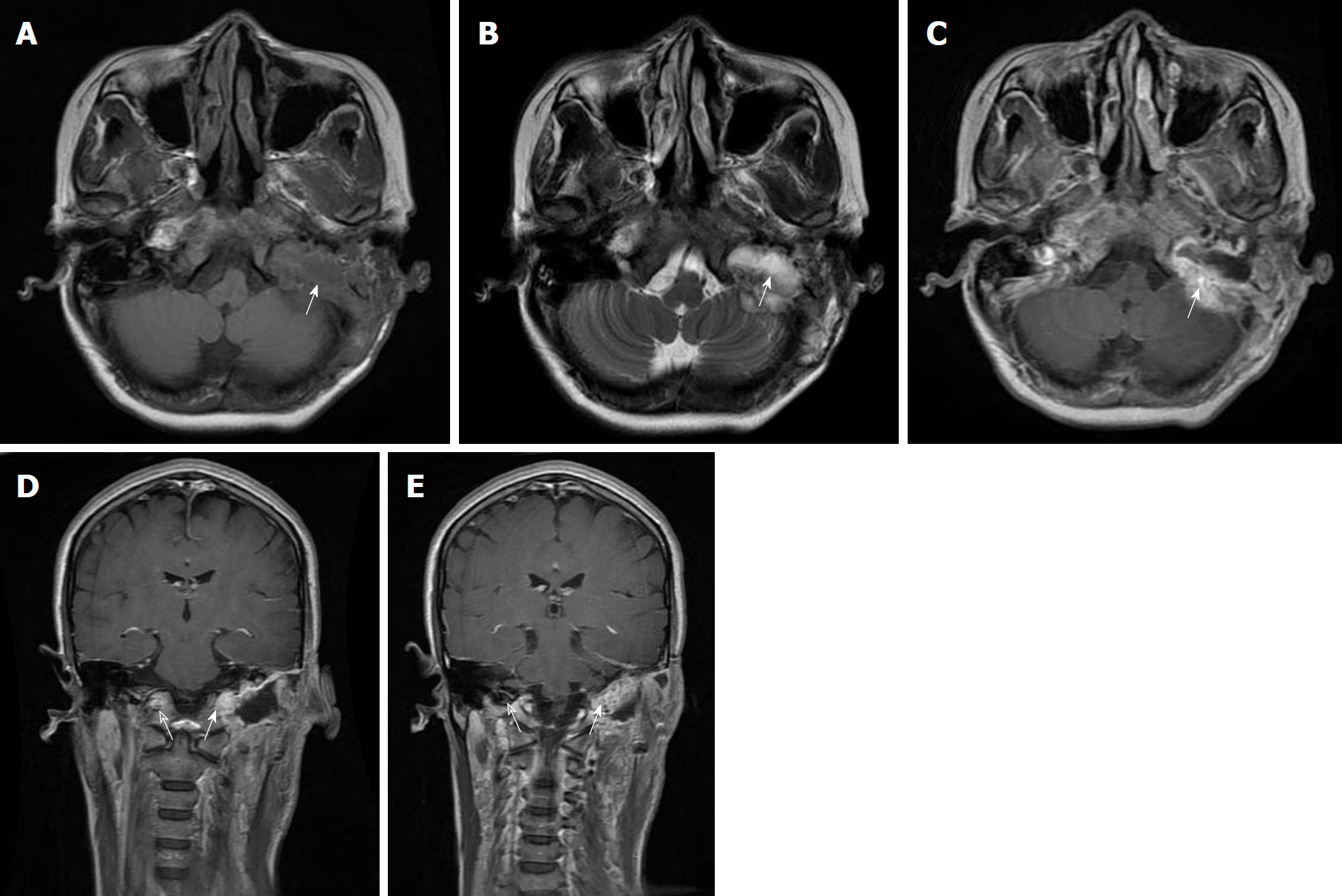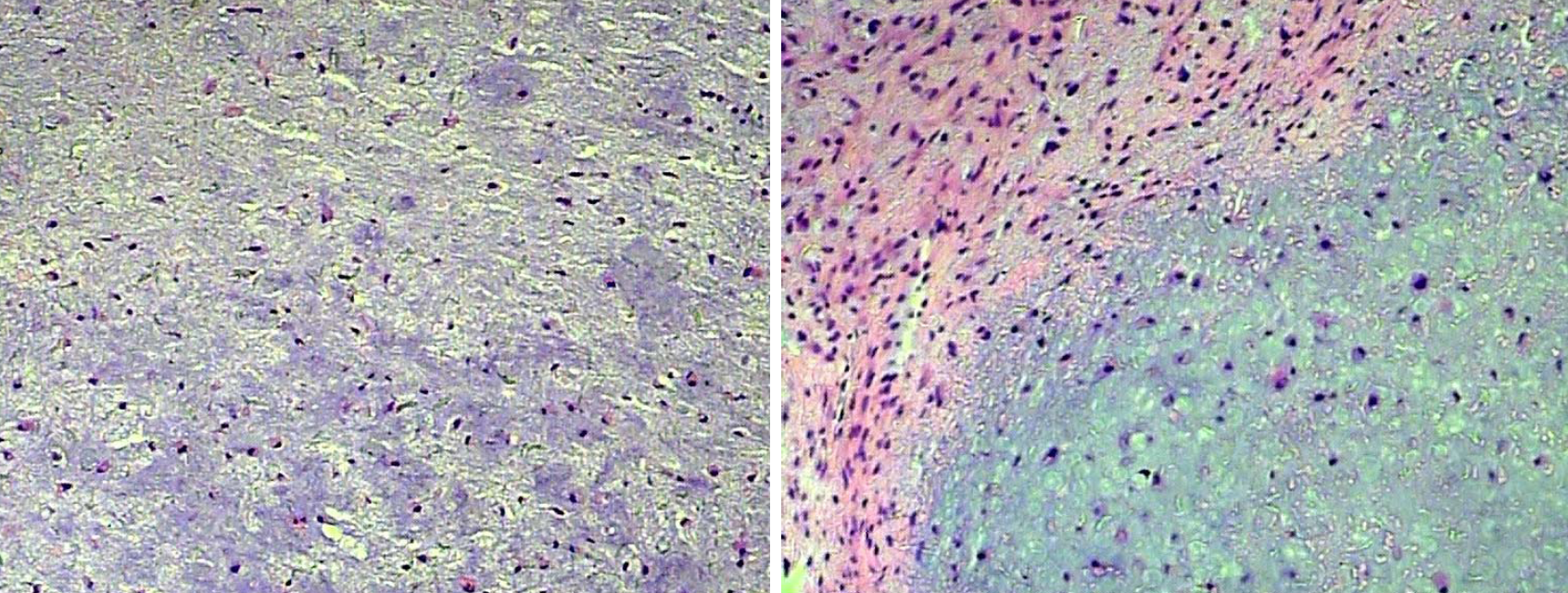Copyright
©The Author(s) 2018.
World J Clin Cases. Dec 26, 2018; 6(16): 1210-1216
Published online Dec 26, 2018. doi: 10.12998/wjcc.v6.i16.1210
Published online Dec 26, 2018. doi: 10.12998/wjcc.v6.i16.1210
Figure 1 Axial computed tomography scan demonstrates a well-defined mass with a sclerotic rim and a scalloped margin originating from the mastoid portion of the temporal bone.
A: The ipsilateral hypoglossal canal (arrow head) and the jugular foramen (arrow) were eroded by the mass. The contralateral hypoglossal canal (blank arrow head) and the jugular foramen (blank arrow) were normal; B: The left mastoid portion of the facial nerve canal was invaded by the tumour (blank arrow). Intratumoral calcification was noted in the tumour (arrow head).
Figure 2 Magnetic resonance imaging findings of the lesion.
A-C: The lesion is hypointensity on axial T1-weighted image (A, arrow), heterogeneous hyperintensity on axial T2-weighted image (B, arrow), and enhances peripherally (C, arrow); D, E: The coronal contrast enhanced MR images show that the tumour invaded the left hypoglossal canal (D, arrow) and the left jugular foramen (E, arrow). The contralateral hypoglossal canal (D, blank arrow) and the jugular foramen (E, blank arrow) were normal.
Figure 3 High-power view of resected specimen showing a myxoid lesion consisting of cartilage material, admixed with spindle-shaped cells and bland stromal cells (H and E staining, ×200).
Figure 4 Postoperative magnetic resonance imaging scans.
A, B: The axial T1-weighted image (A) and gadolinium-enhanced T1-weighted image (B) show that the mass originated from the mastoid portion of the temporal bone and displayed contrast enhancement before it was excised (arrow).
- Citation: Zheng YM, Wang HX, Dong C. Chondromyxoid fibroma of the temporal bone: A case report and review of the literature. World J Clin Cases 2018; 6(16): 1210-1216
- URL: https://www.wjgnet.com/2307-8960/full/v6/i16/1210.htm
- DOI: https://dx.doi.org/10.12998/wjcc.v6.i16.1210












